Is Automated Customer Service Response Right for Your Business

Automated customer service response fits many types of businesses. In retail, over 44% use generative AI to help customers, while more than 63% of retail companies have already implemented AI to enhance service. The table below shows adoption rates across sectors:
| Industry/Setting | Percentage Using Automated Customer Service Systems |
|---|---|
| Customer Support Teams | 45% |
| Call Centers (automation integrated in daily ops) | 25% |
| Call Centers (using AI-powered solutions) | 88% |
| Retail Industry (generative AI adoption) | 44% |
| Retail Companies (AI implemented to enhance service) | Over 63% |
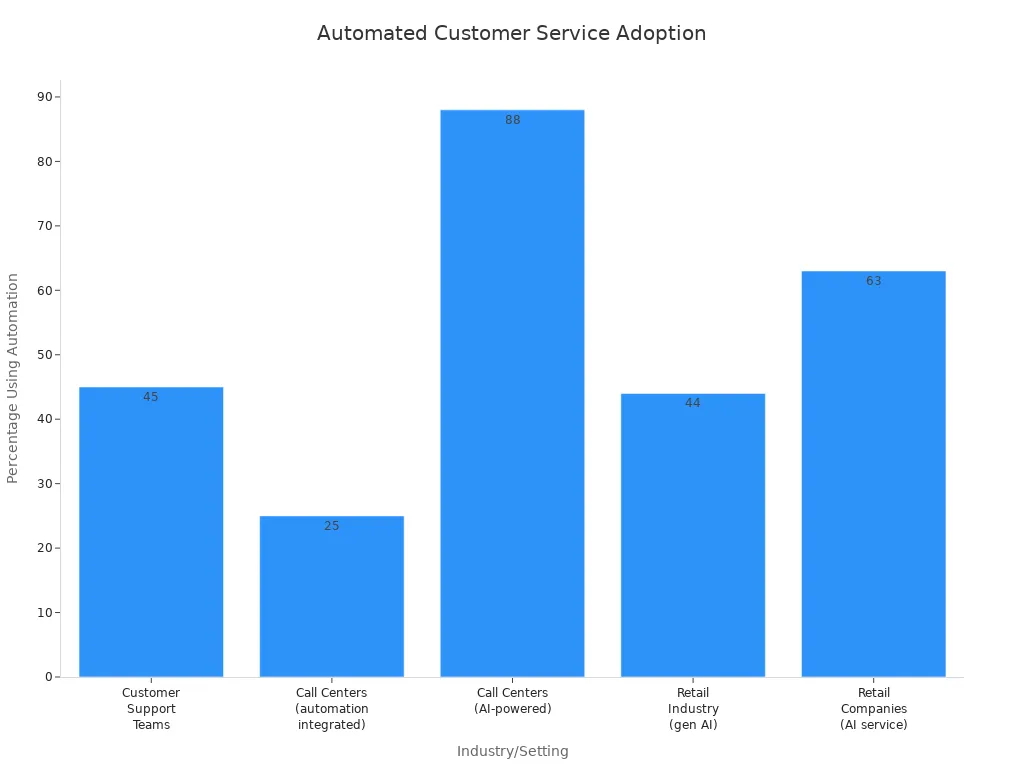
Sobot AI and the Sobot call center give customers tools to meet their needs and improve satisfaction. Businesses often aim to:
- Improve efficiency by automating routine tasks.
- Reduce operational costs.
- Provide 24/7 support for customers.
- Enhance satisfaction and loyalty.
- Promote self-service options.
Every company should consider its own needs and customer expectations before choosing automated customer service response.
Automated Customer Service Response
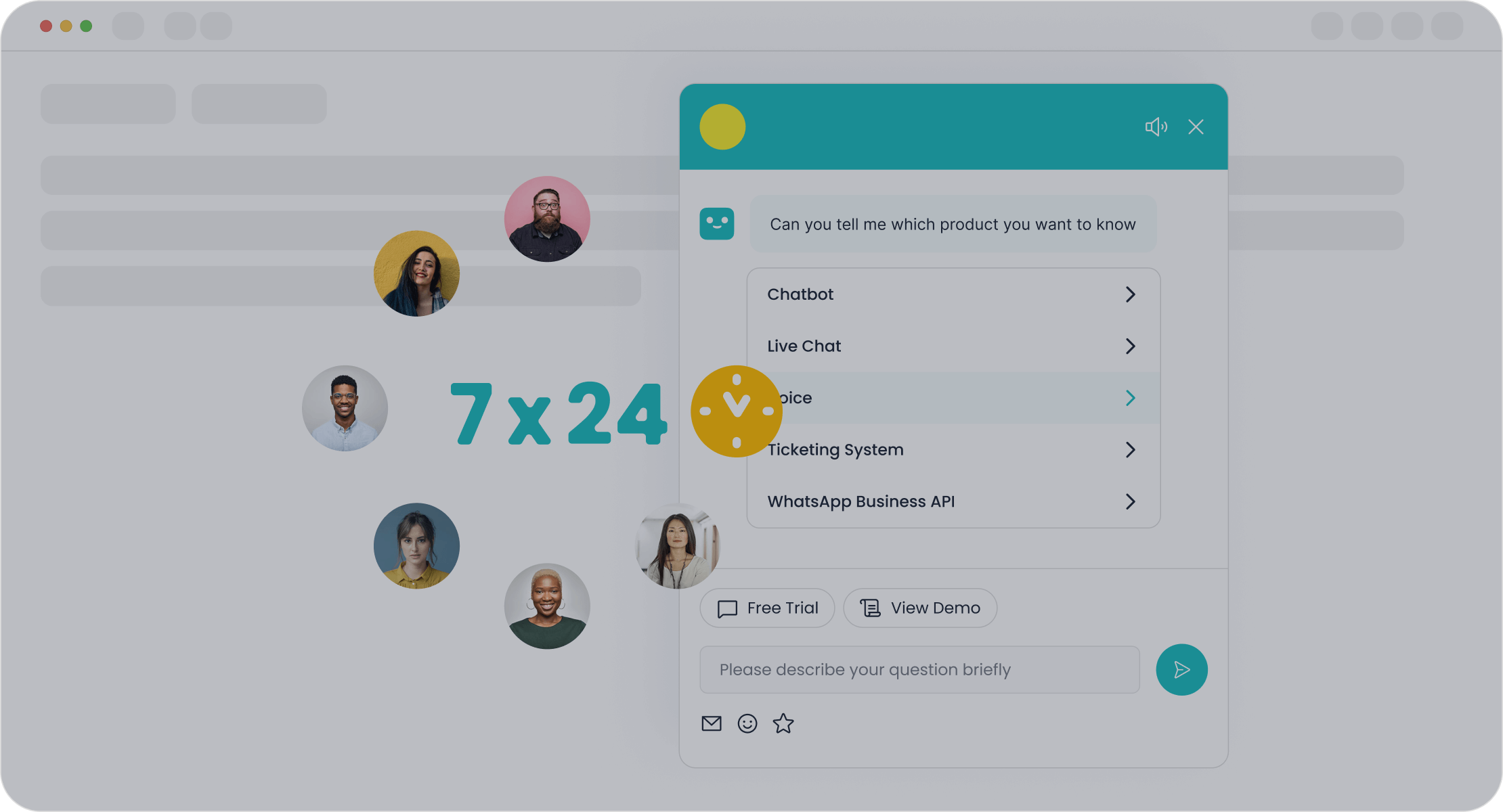
What It Means
Automated customer service response uses technology to handle customer inquiries and support tasks without direct human involvement. Many companies rely on customer service automation to improve speed and efficiency. This approach helps businesses manage large volumes of requests, especially during busy periods. Automated customer service can answer questions, solve problems, and guide customers through processes. In modern customer service, automation plays a key role in delivering fast and reliable support. Companies use end-to-end automated customer support to provide help at any time, day or night. Chatbots often serve as the first point of contact, offering instant answers and reducing wait times.
Key Technologies
Modern customer service relies on several types of automation tools. These technologies help companies deliver consistent and high-quality support:
- AI chatbots engage customers by answering questions and suggesting helpful resources.
- Automated ticketing systems triage, prioritize, and assign tickets to agents, speeding up resolution.
- Interactive Voice Response (IVR) systems greet callers and direct calls using pre-recorded or AI voices.
- Automated notifications remind agents about follow-ups and keep service quality high.
- Automatic translation tools support customers in multiple languages.
- AI-powered assistants handle routine queries, freeing human agents for complex issues.
- Self-service portals allow customers to resolve common issues independently.
- Automated workflows streamline ticket routing and escalation.
These tools work together to create a seamless customer service automation experience. Companies can combine chatbots, ticketing, and IVR systems to cover every support channel.
Sobot Chatbot Overview
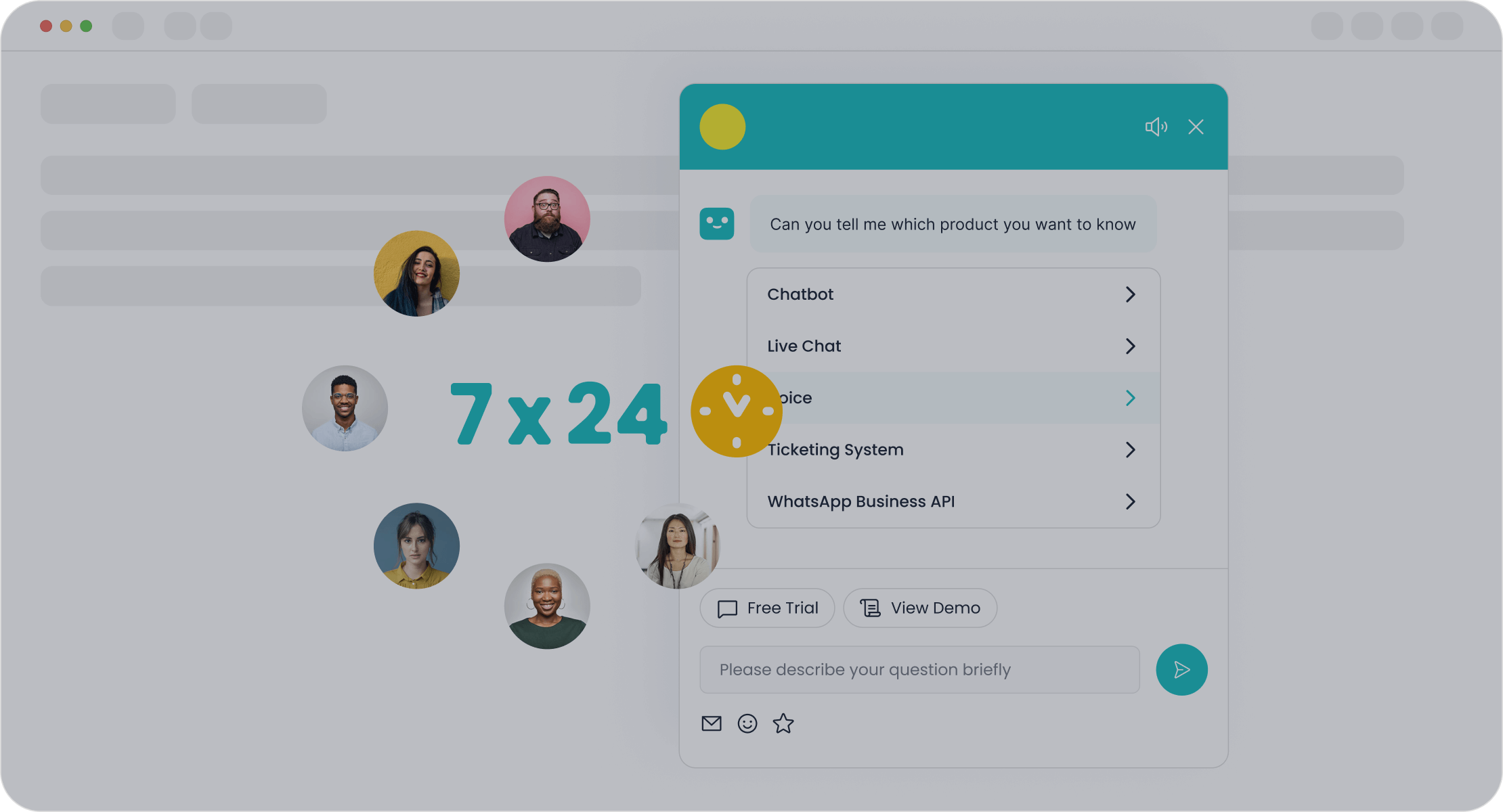
Sobot offers advanced chatbots designed for customer service automation. The Sobot AI Chatbot provides 24/7 support and handles repetitive inquiries across multiple channels, including WhatsApp and SMS. Businesses use Sobot chatbots to improve productivity by up to 70% and cut service costs by as much as 50%. The chatbot is multilingual and easy to set up, requiring no coding. Sobot chatbots use a knowledge base built from articles, PDFs, and other sources to deliver accurate answers. Companies like OPPO have seen an 83% chatbot resolution rate and a 94% positive feedback rate after adopting Sobot’s solution. Sobot’s chatbots help businesses deliver modern customer service that meets today’s expectations for speed and convenience.
Pros and Cons
Advantages
Automated customer service brings many benefits to businesses of all sizes. Companies often choose automation to improve efficiency and deliver better customer experiences. Here are the top advantages and disadvantages to consider:
-
Faster Response Times
Automated systems answer customer questions almost instantly. This reduces or eliminates wait times, which helps prevent negative experiences and increases satisfaction. Many businesses report that automation can respond to inquiries in as little as 2 seconds, with first response times under 1 minute. -
Reduced Workload for Agents
Automation handles simple and repetitive tasks. This allows human agents to focus on complex or sensitive issues. As a result, agents experience less burnout and can provide better service when needed. -
Improved Efficiency and Cost Savings
Automated customer service increases efficiency by speeding up interactions and resolving issues faster. Businesses see measurable cost savings after automation. The table below shows typical improvements:Metric Category Key Performance Indicator Typical Improvement Cost Savings Support cost reduction through AI automation 30% to 70% reduction Efficiency Processing time per inquiry Up to 80% faster Financial Personnel cost reduction 30% to 50% reduction ROI Time to return on investment 6 to 12 months Customer Service Response time reduction Up to 80% faster Many decision makers see these results and plan to increase investments in automation. In fact, 83% of leaders expect to spend more on these solutions in the future.
-
Higher Customer Satisfaction
Automated customer service systems provide 24/7 support. Customers can get help at any time, which meets modern expectations. AI-powered solutions also improve accuracy and consistency, reducing errors and boosting satisfaction scores. Some companies report a 17% increase in customer satisfaction after switching to automation. -
Scalability and Multichannel Support
Automation allows businesses to handle more requests without hiring more staff. Systems like Sobot’s AI Chatbot support multiple channels, including chat, email, and social media. This makes it easier to serve customers wherever they reach out.
Tip:
Automated customer service can help businesses save up to 70% on support costs and process requests up to 80% faster. These improvements lead to higher customer retention and satisfaction.
Disadvantages
While automation offers many benefits, it also comes with challenges. Understanding the disadvantages helps businesses make informed decisions.
-
Loss of Human Touch
Automated systems sometimes struggle with complex or emotional issues. Customers may feel frustrated if they cannot reach a real person or if the system does not understand their needs. The loss of human touch can lead to dissatisfaction, especially for sensitive topics. -
Over-Reliance on Automation
Businesses that depend too much on automation risk missing important customer signals. Automated responses may not always capture the full context of a problem. Over-reliance on automation can cause customers to feel ignored or misunderstood. -
Integration and Maintenance Challenges
Setting up automated customer service requires careful planning. Integrating with existing systems like CRMs or ticketing platforms can be complex. Businesses must also invest in ongoing maintenance to keep systems running smoothly. -
Customer Distrust and Frustration
Some customers do not trust automated agents. If the system fails to resolve their issue or gets stuck in a loop, customers may leave negative reviews or stop using the service. Poorly implemented automation can lead to silent customer loss and financial impact. -
Financial and Operational Risks
Automation requires upfront investment and technical expertise. If not managed well, these costs can outweigh the benefits. Businesses must balance automation with human support to avoid over-reliance on automation and maintain service quality.
Note:
Studies show that UK businesses lose about £37 billion each year due to bad customer service, often linked to poor automation experiences. About 60% of web users see poor customer service as a warning sign when shopping online.
Sobot Benefits
Sobot stands out as a leader in automated customer service solutions. The Sobot AI Chatbot delivers measurable improvements in both efficiency and customer satisfaction. Here are some key benefits:
-
Rapid Response and Resolution
Sobot’s chatbots answer customer inquiries in as little as 2 seconds. The system achieves a first response time under 1 minute, which greatly improves efficiency and customer experience. -
Reduced Ticket Volume
Sobot clients report a 40% reduction in customer support tickets. This allows human agents to focus on complex cases and reduces operational costs. -
Higher Satisfaction and Retention
Businesses using Sobot see a 30% increase in customer satisfaction. For example, OPPO achieved an 83% chatbot resolution rate and a 94% positive feedback rate after adopting Sobot’s solution. The company also saw a 57% increase in repurchase rate. -
Cost Savings and ROI
Sobot’s automation helps companies cut service costs by up to 50%. The return on investment is clear. For every dollar spent on Sobot’s AI chatbot, businesses can see a 150% return within the first year. The table below shows how companies measure ROI:Metric/Scenario Description Value Customer Satisfaction (CSAT) Percentage of customers satisfied with service Monitored KPI Average Handling Time (AHT) Average time to resolve customer inquiries Monitored KPI Cost per Contact Cost of handling each customer interaction Monitored KPI Annual Customer Service Budget Total yearly budget for customer service $1,000,000 Chatbot Implementation Cost Cost to implement AI-powered chatbot $200,000 Average Handling Time Reduction Reduction in handling time due to chatbot 30% Customer Satisfaction Increase Increase in satisfaction due to chatbot 20% ROI Formula:
ROI = (Gain from Investment - Cost of Investment) / Cost of InvestmentExample:
ROI = (($1,000,000 x 0.30) + ($1,000,000 x 0.20) - $200,000) / $200,000 = 150% -
Omnichannel and Multilingual Support
Sobot’s AI Chatbot works across many platforms, including WhatsApp, SMS, and web chat. It supports multiple languages, making it easy for businesses to serve global customers. -
Easy Setup and Customization
Sobot’s point-and-click interface allows businesses to set up automation without coding. The system is customizable, so companies can tailor workflows to their needs. -
Continuous Improvement
Sobot provides real-time analytics and reporting. Businesses can track key metrics, identify areas for improvement, and optimize their automated customer service over time.
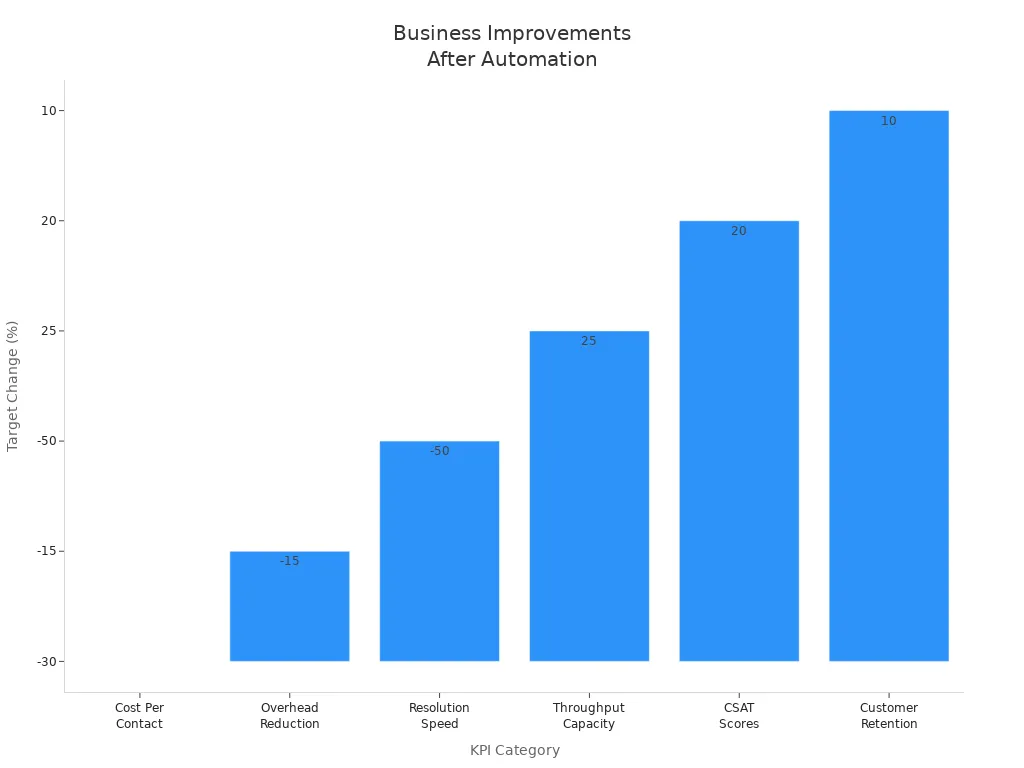
Tip:
Sobot’s AI-powered solutions help businesses avoid over-reliance on automation by combining smart chatbots with human agents. This balance ensures customers always receive the right level of support.
Customer Service Automation in Retail and E-Commerce
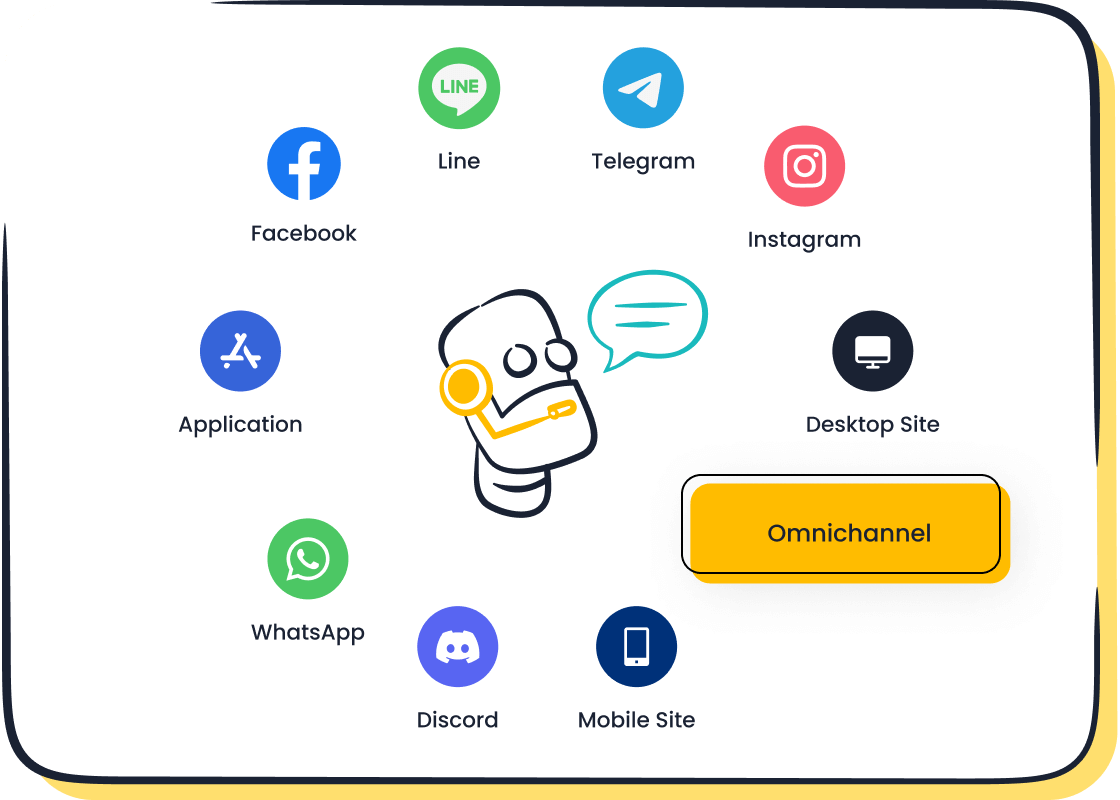
Industry Needs
Retail and e-commerce businesses face unique challenges that set them apart from other industries. Growing competition makes it hard for companies to stand out. Customers expect fast shipping, easy returns, and personalized recommendations. Many businesses struggle with low conversion rates and high cart abandonment. They also need to manage cybersecurity risks and provide a seamless experience across online and physical stores.
Some common needs include:
- Creating unique customer experiences to compete in a crowded market.
- Meeting high expectations for quick, reliable service.
- Handling large volumes of customer inquiries, especially during sales or holidays.
- Offering personalized support and recommendations.
- Scaling operations without losing quality or increasing costs.
Sobot AI Solution
Sobot addresses these needs with advanced customer service automation tools. The Sobot AI Solution uses chatbots to provide 24/7 support, answer questions, and guide customers through their shopping journey. Sobot’s Five-AI system covers every customer touchpoint, from chat and email to social media. The platform integrates with major e-commerce sites like Shopify and Amazon, making it easy for businesses to manage all channels in one place.
Key features include:
- Scenario-based AI designed for retail and e-commerce.
- Omnichannel support for consistent customer experiences.
- AI-powered predictive analytics for inventory and demand forecasting.
- Secure data handling to protect customer information. Sobot’s chatbots resolve up to 70% of customer inquiries and can triple conversion rates. These tools help businesses save time, reduce costs, and meet the changing needs of customers.
OPPO Case Study
OPPO, a global smart device brand, used Sobot’s customer service automation to improve support during busy shopping periods. After deploying Sobot chatbots, OPPO achieved an 83% resolution rate for customer inquiries. The company saw a 57% increase in repurchase rates and a 25% drop in customer churn. Over 90% of OPPO’s customers reported a positive experience with the new system. Sobot’s solution helped OPPO engage customers across multiple channels and deliver fast, personalized service. This case shows how customer service automation can boost satisfaction, loyalty, and sales in retail and e-commerce.
Impact on Customer Satisfaction
Speed and Availability
Speed and accessibility shape customer experience in every industry. Automated customer service systems transform response times from hours to seconds. Businesses using automation report up to a 70% reduction in response time. The table below shows how different automation methods improve resolution speed:
| Automation Method | Response Time Reduction |
|---|---|
| General automation tools | Up to 70% reduction |
| AI-driven IVR systems | 20-30% reduction in call handling time |
| Automated ticket routing | 25-35% reduction in ticket resolution time |
Customers value 24/7 availability and round-the-clock support. Sobot’s AI chatbots deliver instant answers, reducing first response time from 15 minutes to just 2 minutes. This accessibility ensures customers receive help whenever they need it, which leads to improved customer satisfaction and enhanced customer experience.
Personalization
Personalisation plays a key role in building customer trust and loyalty. Automated platforms use customer data to create personalised interactions. For example, Sobot’s chatbots tailor responses based on customer history and preferences. This approach makes customers feel understood and valued. Companies like Amazon and Nike use personalisation to increase engagement and retention. Personalised interactions encourage customers to return and recommend the brand to others. Consistent omnichannel experiences and proactive support further strengthen satisfaction and loyalty.
Sobot’s Results
Sobot’s automated customer service solutions deliver measurable improvements in customer interactions and resolution rates. The chart below highlights key metrics before and after automation:
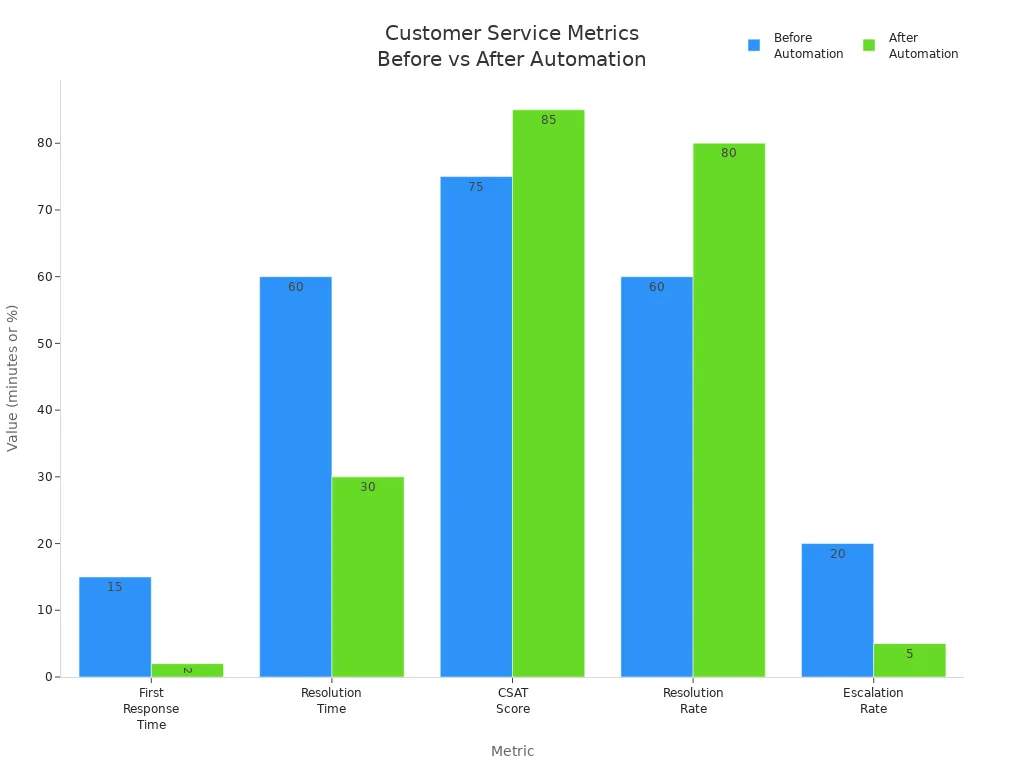
| Metric | Before Automation | After Automation | Improvement (%) |
|---|---|---|---|
| First Response Time | 15 minutes | 2 minutes | 86.7 |
| Resolution Time | 60 minutes | 30 minutes | 50 |
| Customer Satisfaction (CSAT) Score | 75% | 85% | 13.3 |
| Resolution Rate | 60% | 80% | 33.3 |
| Escalation Rate | 20% | 5% | 75 |
Sobot’s clients report increased customer satisfaction, higher resolution rates, and lower escalation rates. These results show how automation leads to improved customer satisfaction, accessibility, and efficiency. Sobot’s solutions provide 24/7 availability, personalisation, and faster resolution, which create an enhanced customer experience and drive customer loyalty.
Is Automation Right for Your Business?
Evaluation Criteria
Businesses must carefully assess if customer service automation fits their operations. The right approach starts with clear evaluation criteria. Companies should look for signs that automation can solve real problems and improve results. Here are key questions and criteria to consider:
-
Are there frequent workflow bottlenecks or delays?
If teams often face slowdowns, automation can help speed up processes. -
Does the business experience high staff turnover in repetitive roles?
Automation can reduce the burden of tedious tasks, making jobs more engaging and lowering turnover. -
Are manual labor costs high?
Customer service automation can cut costs by handling routine inquiries and tasks. -
Is the company planning to grow beyond current workforce capacity?
Automation supports growth without the need for constant hiring. -
Do data entry errors impact service quality?
Automated systems reduce mistakes and improve accuracy. -
Are long customer wait times causing dissatisfaction?
Automation can provide instant responses, improving the customer experience. -
Are outcomes inconsistent across teams or agents?
Automation ensures consistent answers and service quality.
Tip:
Focus on automating tasks that employees find repetitive or frustrating. This not only boosts efficiency but also improves morale.
Companies should also follow best practices when considering customer service automation:
- Use automation to free human agents for complex issues, not to replace them.
- Offer 24/7 basic support to improve availability.
- Ensure automated responses are accurate and match the brand’s voice.
- Always provide a clear path for customers to reach a human agent.
- Clearly label automated messages to avoid confusion.
- Apply automation strategically to specific parts of the customer journey.
A thoughtful evaluation helps businesses avoid common pitfalls, such as robotic answers or missed upsell opportunities. By focusing on these criteria, companies can decide if customer service automation aligns with their needs and goals.
Implementation Steps
Once a business decides to move forward, a structured approach ensures successful integration of customer service automation. The following steps guide companies through the process:
-
Set Clear Goals
Define what the business wants to achieve with automation. Goals might include reducing response times, lowering costs, or improving customer satisfaction. -
Choose the Right Channels
Select communication channels that match customer preferences. Sobot supports web chat, mobile apps, social media, email, and SMS, making it easy to reach customers everywhere. -
Integrate Intelligent Chatbots
Deploy chatbots to handle routine questions and free up human agents for more complex issues. Sobot’s chatbots use advanced AI to provide accurate, context-aware answers. -
Build and Manage a Knowledge Base
Create and organize support content. Sobot’s platform allows businesses to update knowledge bases easily, ensuring chatbots always have the latest information. -
Monitor and Analyze Performance
Use real-time analytics to track key metrics like response time, resolution rate, and customer satisfaction. Sobot provides dashboards for easy monitoring. -
Customize Workflows
Tailor automation flows to fit business needs. Sobot’s visual bot builder lets non-technical users design and adjust chatbot conversations. -
Enable Seamless Handover
Set up protocols for chatbots to transfer complex or sensitive cases to human agents. Sobot ensures a smooth transition with full context transfer. -
Support Multiple Languages
Serve a global audience by enabling multilingual support. Sobot’s chatbots can interact in many languages. -
Ensure Security and Compliance
Protect customer data with encryption and authentication. Sobot meets international security standards and uses regional data centers. -
Train and Support Staff
Provide training for employees to work alongside automated systems. Encourage adoption and address concerns early. -
Continuously Optimize
Regularly review performance data and customer feedback. Update workflows and knowledge bases to improve results.
Note:
Businesses that follow these steps often see major improvements. For example, after implementing customer service automation, companies report a 37% drop in first response times and a 52% increase in ticket resolution speed.
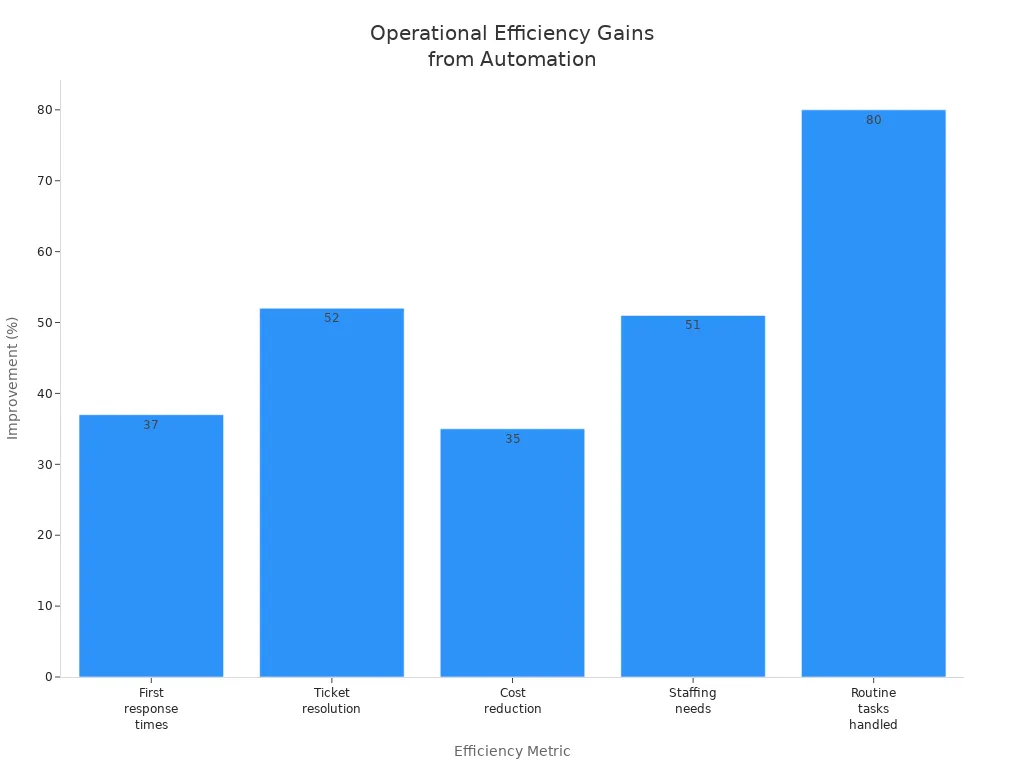
A real-world example comes from Agilent. By integrating Sobot’s AI chatbot with their knowledge base, Agilent increased efficiency by six times and reduced costs by 25%. This shows how customer service automation can transform operations and deliver measurable value.
Sobot Support
Sobot provides comprehensive support for businesses adopting customer service automation. The platform uses an AI-First strategy, integrating channels like websites, apps, social media, email, phone, and SMS. This approach ensures a seamless customer experience, with context retained across every touchpoint.
Sobot’s AI platform offers 24/7 automated support, handling repetitive tasks so human agents can focus on complex or emotional issues. The system uses advanced technologies such as large and small language models, natural language processing, and speech recognition. These tools deliver accurate, human-like responses and maintain the brand’s voice.
Sobot’s AI Copilot assists agents by drafting replies, summarizing conversations, and autofilling tickets. Voicebots manage over half of inbound calls and support outbound marketing, boosting sales by more than 30%. The platform supports scenario-based AI tailored to industries like retail and e-commerce, meeting unique business needs.
Security and compliance remain top priorities. Sobot uses regional data centers and holds international certifications to protect customer information. The platform’s hybrid model balances automation with empathy, allowing AI to handle routine tasks while humans manage sensitive issues.
Sobot also offers chatbot operation entrustment services. Their knowledge operation team helps businesses improve chatbot Q&A accuracy, ensuring effective integration with existing workflows. Companies benefit from real-time analytics, customizable workflows, and a unified dashboard for all customer interactions.
Tip:
Sobot’s omnichannel platform and advanced AI tools make customer service automation accessible and effective for businesses of all sizes. The company’s support ensures a smooth transition and ongoing success.
By following these steps and leveraging Sobot’s expertise, businesses can unlock the full potential of customer service automation. They can improve efficiency, reduce costs, and deliver better experiences for their customers.
Businesses achieve the best results by blending automated customer service response with human empathy. Automation handles routine tasks quickly, while people provide the trust and care customers want. Companies should match their strategy to business goals and customer needs. Many leaders start with a pilot of Sobot Chatbot, then track key metrics and adjust. Regular reviews help teams keep pace as technology and customer expectations change. Sobot’s solutions support this balanced approach, making customer service both efficient and personal.
FAQ
What is automated customer service response?
Automated customer service response uses technology to answer customer questions without human help. Companies use chatbots, ticketing systems, and AI tools. Sobot’s AI Chatbot provides automated customer service response 24/7, helping businesses save time and improve satisfaction. Learn more at Sobot’s website.
How does automated customer service response improve efficiency?
Automated customer service response speeds up replies and reduces wait times. Sobot’s clients report up to 70% faster response times. The system handles routine questions, so agents can focus on complex issues. This leads to higher productivity and better customer experiences.
Can automated customer service response support multiple languages?
Yes. Sobot’s AI Chatbot supports many languages. This feature helps businesses serve global customers. Automated customer service response in different languages increases accessibility and satisfaction for users worldwide.
Is automated customer service response secure?
Sobot’s automated customer service response uses data encryption and regional data centers. The platform meets international security standards. Businesses trust Sobot to protect customer information and ensure compliance with privacy laws.
What results can businesses expect from automated customer service response?
Businesses using automated customer service response often see higher satisfaction scores, lower costs, and faster resolutions. For example, OPPO achieved an 83% chatbot resolution rate and a 94% positive feedback rate after using Sobot’s solutions.
See Also
Ways Artificial Intelligence Enhances Customer Support Productivity
Understanding The Efficiency Behind Automated Call Center Systems
Comparing Leading Interactive Voice Response Solutions Today
